Mark Woods: Within days of opening, the new bridge path was trashed. And then it wasn't.
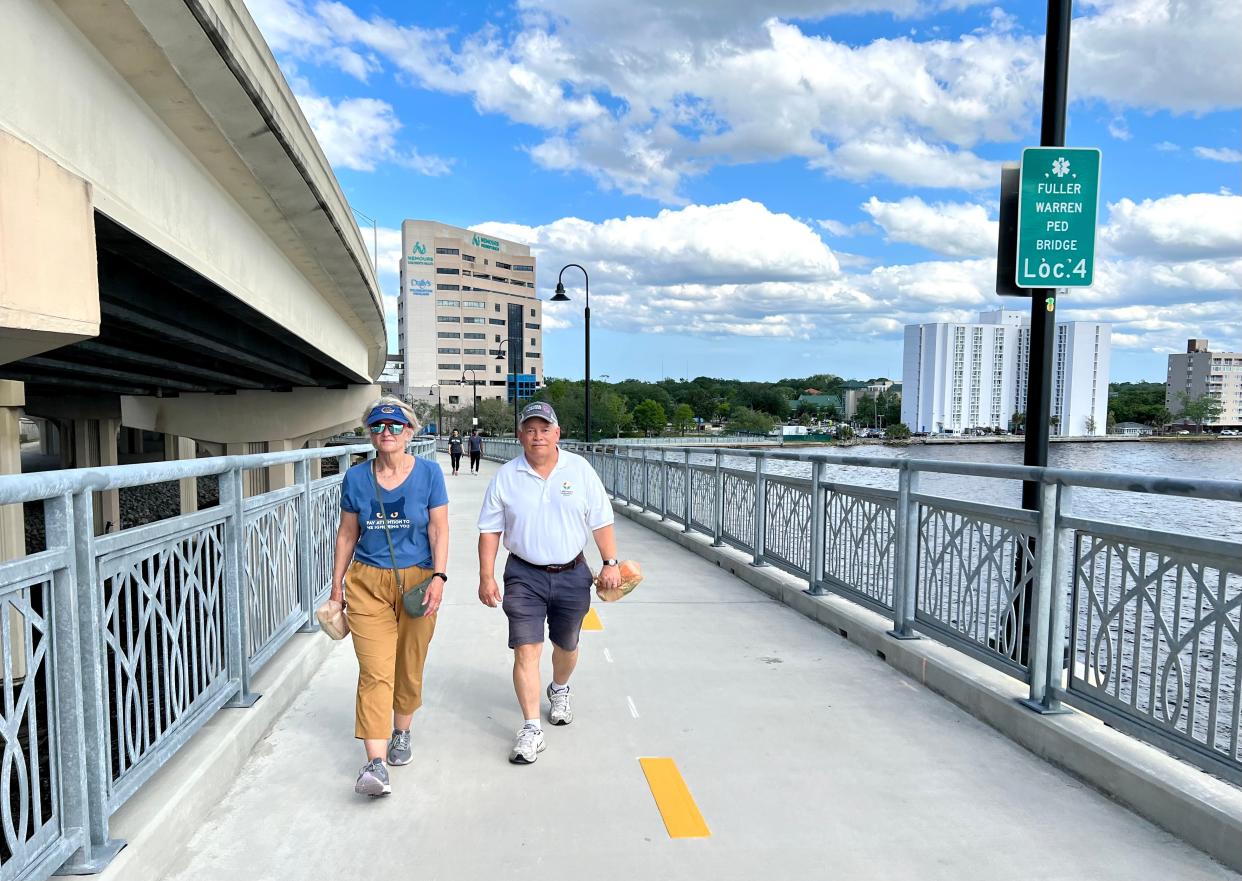
- Oops!Something went wrong.Please try again later.
The box from a 15-pack of Bud Light, a chunk of thick Styrofoam, a couple of ice bags, a blue latex glove, a Panda Express napkin, a Checker’s french fry box, a Daily’s 44-ounce cup, a chocolate Moon Pie wrapper, a Firehouse subs wrapper, a plastic bag, a Styrofoam food box, a plastic lid for a drink, a torn lottery ticket, several plastic water bottles, cigarette butts and more.
That’s what I found lining the Fuller Warren shared-used path less than a week after it opened.
The path was clean for a ribbon-cutting ceremony. It was clean the next morning when I went for a run across it. It was clean the morning after that when there was a community “parade” —with one group of people starting on the Northbank and another on the Southbank, everyone meeting in the middle and joyfully celebrating the new path.
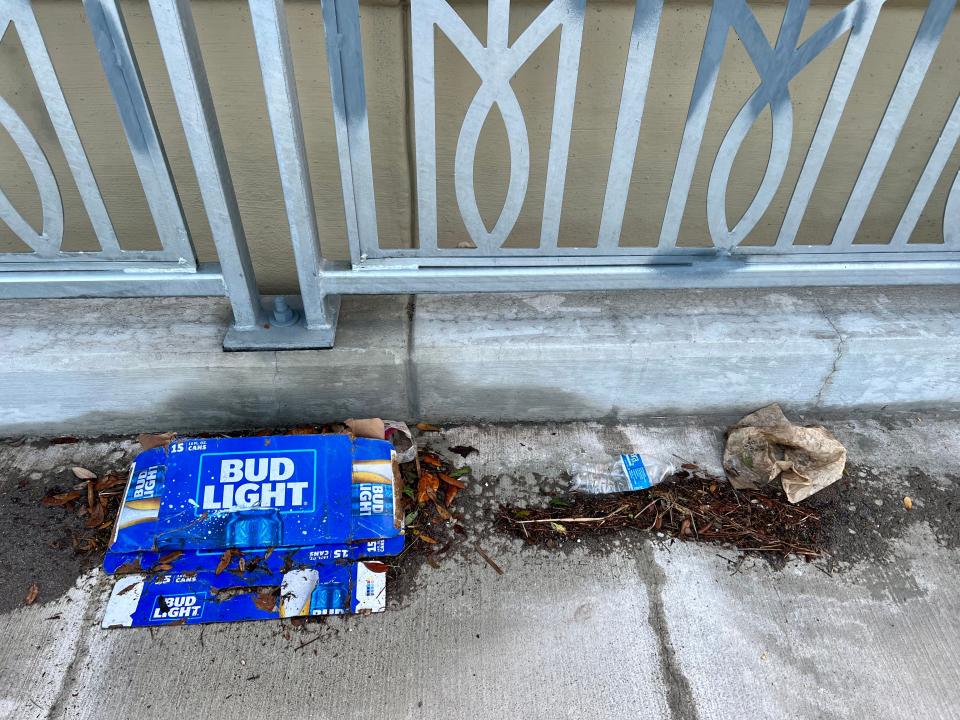
But when I returned a couple of days later, the path was trashed.
I looked at the debris and thought: What’s wrong with people? Also — not that this excuses people — but there needs to be trash cans at each end of the path.
In Jacksonville, this is a recurring problem. Even when we actually create nice things, we seem to struggle to maintain them. I just didn’t think it would happen this quickly with the new path.
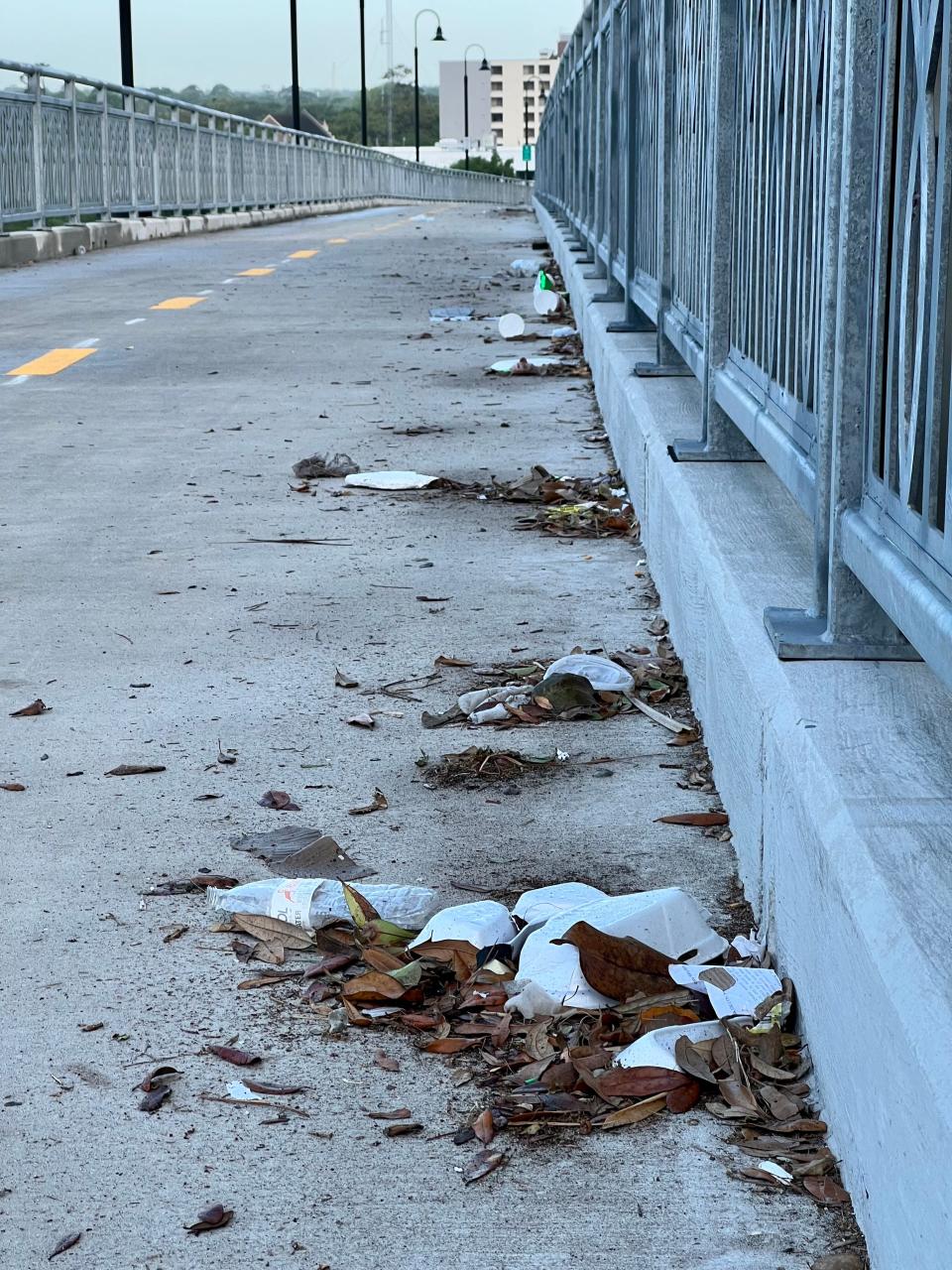
Was the trash left there by people who used the path the first weekend it was open? Or had it come from I-95, maybe tossed by motorists out of vehicles, or blown out of truck beds, eventually making it over the concrete barrier separating the interstate from the path?
I still don’t know. But I now know a couple of things.
The path was clean by the end of that same day. And for that we should thank Stan and Diane Pilinski.
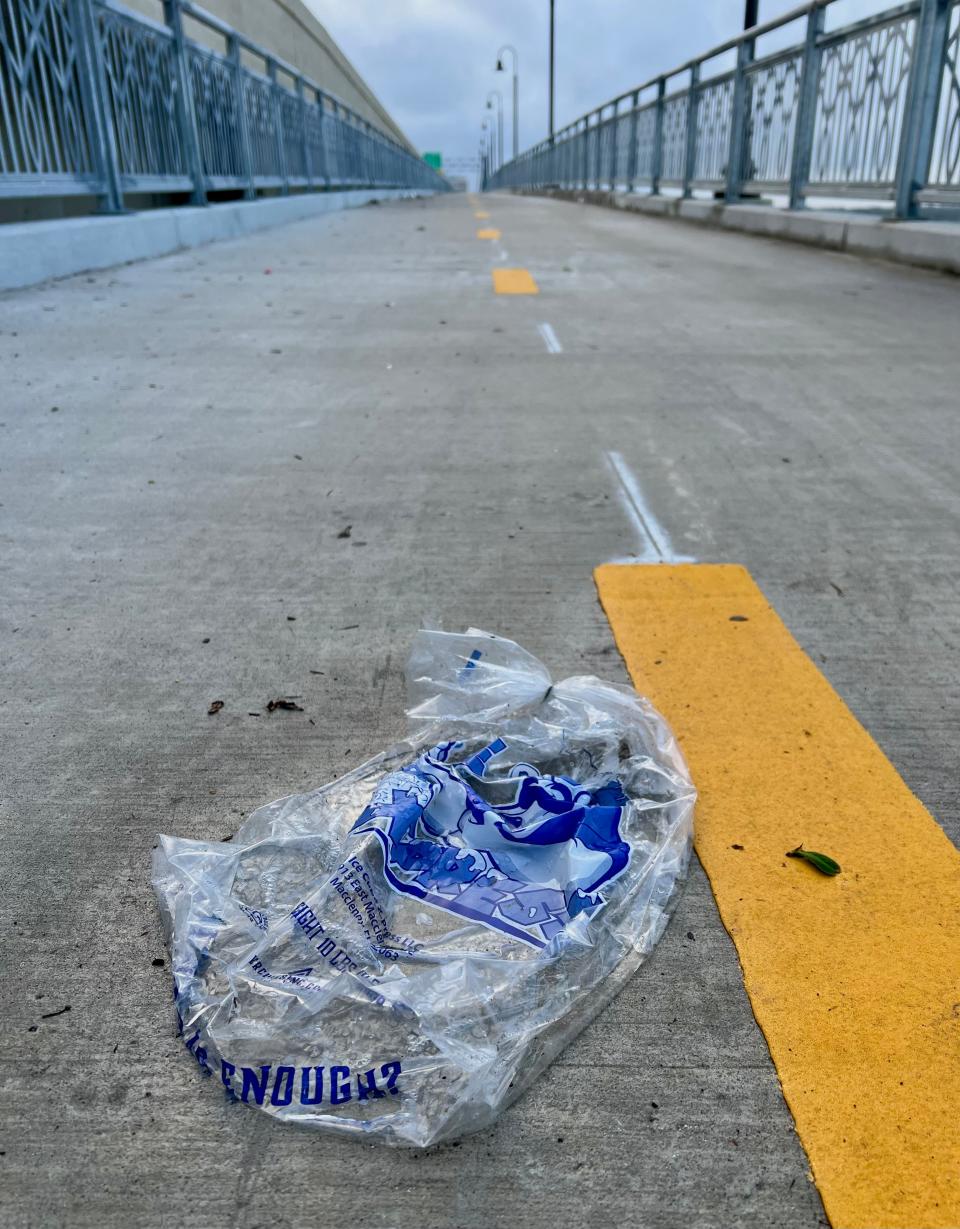
Cardio with a little bit of bending
They picked up six bags of trash on the path that day. And not because I posted a few pictures that morning on Twitter. Or because of the reaction to that post (ranging from “this is why we can’t have nice things” to “lots of outrage and silly comments, but not a single comment is someone volunteering to clean it up”).
They didn’t see any of that until that evening, after they already had picked up the trash.
They did it because it was a Tuesday. And that’s what Stan does most Tuesday and Thursday afternoons, ever since he retired from the Army Corps of Engineers.
“I’ve been doing the Acosta and Main Street loop for a few years,” he said Sunday afternoon.
We were walking the Fuller Warren path. As was the case every time I’ve been on the path — and I’ve crossed it probably a dozen times since it opened — it was quite busy.
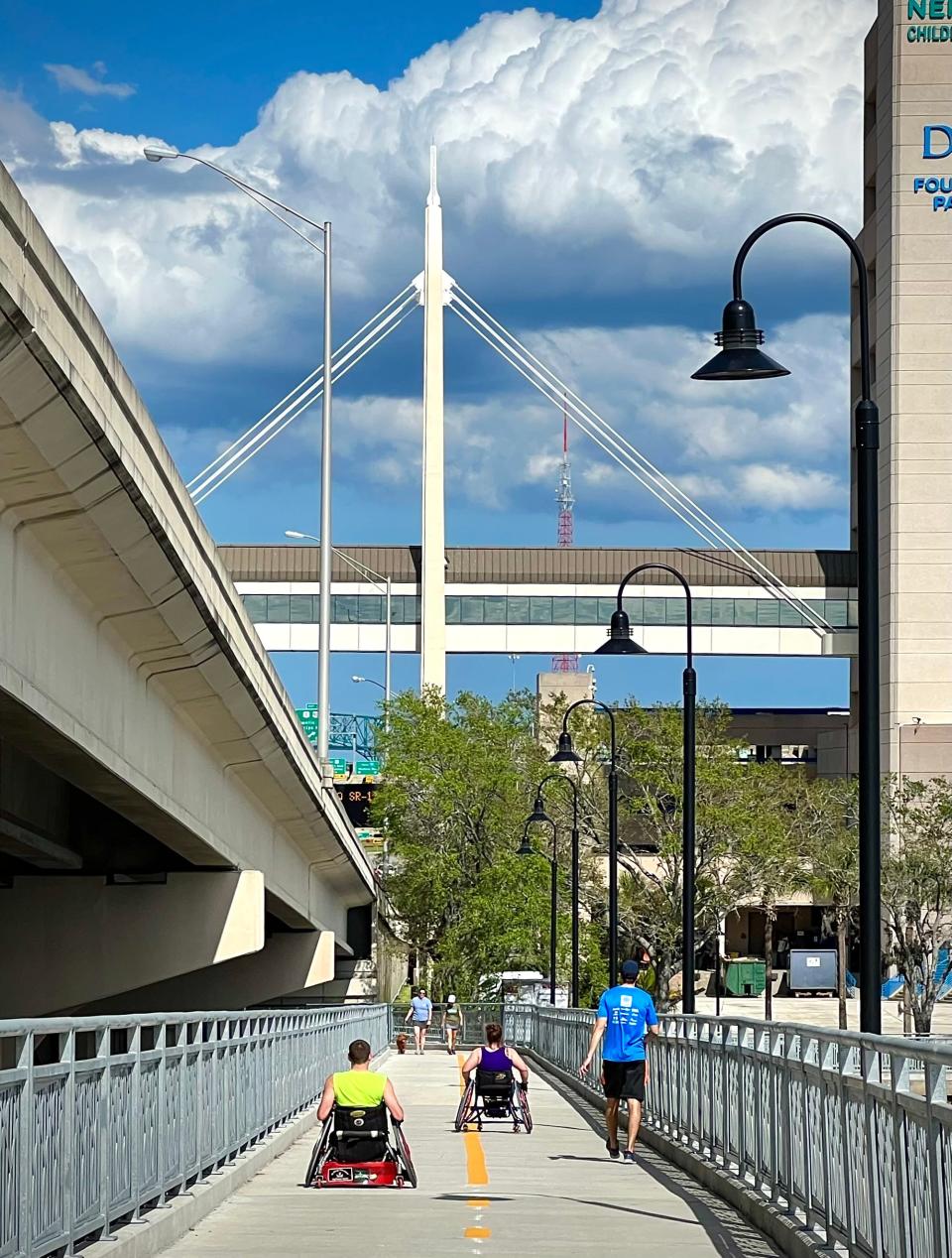
There were people walking, running, biking. There was a man and a woman in racing wheelchairs. There were people walking dogs. There were families with children. There were people of all different races, shapes and ages.
The one thing there really wasn’t much of — trash.
Stan and Diane brought plastic grocery bags with them, but there wasn’t much for them to pick up. Not this time. Although on the way to meet me at the foot of the bridge, across the street from the Riverside Arts Market, Stan did stop and pick up a Styrofoam cup.
"I hate Styrofoam and plastic," he said.
He and Diane both grew up in Jacksonville, even went to kindergarten at the same school and the University of Florida at the same time, but didn’t meet until they were adults.
When he was working, his office was on the Southbank. At some point he realized that if he had an appointment on the Northbank, it was quicker to walk over the Main Street Bridge than to get in his car, drive over and find parking.
When he retired, he took that walk, adding in the Acosta, and made it part of a routine. Three days a week to the gym. Two days a week to the bridges.
“It gives me some cardio,” he said, spotting a piece of paper and picking it up. “And a little bit of bending.”
The bending part of the workout started when he saw trash and recalled a sermon. The pastor told a story about a professor who was walking his campus every day, complaining about the trash. One day the professor decided to carry a bag and start picking up trash. As he continued to do this, the campus not only stayed cleaner, other people started joining him.
On that Tuesday I saw all the trash, Diane was off from work and able to join Stan for his afternoon walk. They each had a bag with them. But it wasn’t enough. By the time they reached the other end of the bridge, both bags were full and Diane had her hands full. When they reached the bottom of the bridge at the Southbank, there wasn’t a trash can in sight.
They walked to Baptist MD Anderson Cancer Center and found one there.
“When I do the Acosta, at least there are places to drop the trash — like near the Times-Union Center,” he said.
On the way back, they used bags they already had, plus the empty ice bags they’d found, filling them up and finding a trash can across the street from the Northbank ramp.
Most of what they picked up was lightweight trash. Stan’s guess is that it blew onto the path from the road.
When we reached the bottom of the bridge on this walk, Diane spotted a Styrofoam cup wedged in the fence. As she pulled it out and put it into her bag, Stan said there are some things he won’t pick up. Broken glass, masks, cigarette butts.
But he’s glad to pick up Styrofoam, plastic, cans and more.
“I do the walking for me,” he said. “But I might as well do the cleanup for the city, for the environment. I see dolphins. I know all this stuff blows out into the water.”
State of the path is up to the state
The Fuller Warren path was a Florida Department of Transportation project. So it’s the state, not the city, that handles cleanup.
Daryl Goss, community outreach specialist for FDOT District Two, said it’s hard to know whether the trash that accumulated recently was from path users or I-95. But he added that during construction “debris from the roadway was not a daily challenge like it is today.”
He said that across the region, trash and debris cleanup is an ongoing challenge for maintenance crews, which perform sweeping and pick-up in multi-week cycles.
“All roadway and shared use path users are encouraged to ‘drive it home’ or ‘walk it’ to the next trash receptacle,” he wrote in an email.
This leads to one of the issues with the Fuller Warren SUP when it opened: a lack of trash receptacles.
There’s a reason another Main Street, the one at Disney, is known for being clean. It’s partly because there’s always a trash can nearby, and partly because there’s always an employee nearby picking up trash.
Not that I want trash cans lining the Fuller Warren path. It should remain unobstructed. But there should at least be cans at the ends of it — and they should at least be emptied as often as required to keep them from overflowing.
Goss said FDOT officials are working with contractors to put trash cans at the entrances of the path. He also said it takes more than that to keep roadways and paths clean.
“Regardless of where the litter occurs it takes everyone being responsible to overcome this challenge,” he said.
Everyone being responsible. We know that isn’t going to happen.
But instead of simply going on a “what’s wrong with people” rant, I wanted to include the “what’s right with people” twist.
Stan Pilinski knows he isn’t going to get rid of trash on the bridges. He knows that when he picks some up on Tuesday, he will return Thursday and find more.
But he figures it’s like the starfish story, the one where someone walking a beach covered with thousands of starfish comes upon a child trying to save them by throwing them back into the ocean. When the adult tells the child that there are so many starfish he can’t make a difference, the child picks up one, throws it in the water and says, “I made a difference for that one.”
This is kind of the inverse of that. He can’t get all the trash. But he figures every piece he does pick up is one less piece on a bridge or in the river.
mwoods@jacksonville.com
(904) 359-4212
This article originally appeared on Florida Times-Union: Keeping new Fuller Warren shared-use path free of litter a challenge

